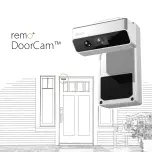
3
POND VOLUME
It is important to calculate the estimated water volume before you begin construction, and
then re-calculate final water volume when your project is completed. Estimating water volume
pre-construction is a step that is often skipped by many homeowners and contractors. A
water garden with undersized filtration can prove to be a maintenance nightmare.
TO DETERMINE POND VOLUME
Multiply (in feet) the average length x the average width x the average depth to find
cubic feet of pond volume. Multiply cubic feet x 7.48 = gallons.
WATER GARDENS
SURFACE AREA
When using any pond skimmer it is important to keep the surface area (in square feet) of
the pond in mind. Upon start-up, the pump sends water from the bottom reservoir to the top
of the waterfall and/or streambed. The water must then fill, from top to bottom, the waterfalls
and streambed until it eventually re-enters the pond and the water levels equalize. During
water in transition process, the water level of the bottom reservoir is continually dropping. If
the streambed is built improperly, or is built too big, the water level of the bottom reservoir
could drop below the opening in the skimmer before the water levels equalize. This would
result in the pump running dry and starving for water.
This situation can be easily avoided by using the formula provided to calculate the surface area
of your pond. With that number, you can then determine the maximum surface area of waterfalls
and streambed that your pond can accomodate.
TO DETERMINE SURFACE FOOTAGE
Multiply (in feet) the average length x the average width = total square feet of the pond
surface area. Multiply the surface area of the pond x .5 = maximum surface area for falls.
10’
5’
3’3”
8’
Use the product specification/cross reference guide on page 2 to verify the
maximum pond volume and flow rates for your Waterscapes Equipment.
LENGTH
WIDTH
DEPTH
Figure 1.
Figure 2.
EXAMPLE
10’ x 5’ = 50sq ft pond surface area
50sq ft x .5 = 25sq ft stream surface area






























